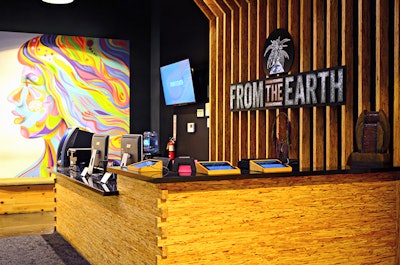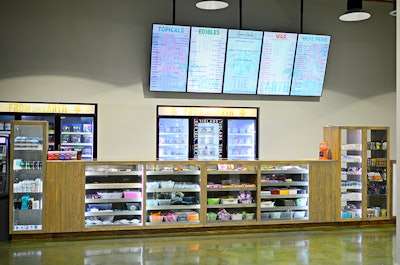
From the Earth (FTE), a cannabis dispensary with locations in California and Michigan, will soon transition its newly opened Michigan store from medical-only to adult-use sales, a leap it made at its California locations last year.
While each market has its own nuances, there are some general best practices for preparing a dispensary to serve a larger market. Here, FTE manager Dan Zaharoni outlines his top tips for a successful expansion.
1. Be prepared to alter daily operations.
When FTE expanded its medical-only stores in California to serve the adult-use market last year, the company doubled its revenue. That kind of growth will require changes to the dispensary’s day-to-day operations, Zaharoni says.
“We did have to alter our operations in order to accommodate the surge in customers, which included hiring additional FT Experts (budtenders), adding cash registers, increasing our reception staff to handle check-ins and ordering twice as much inventory as we had previously done,” he says.
In California, medical patients and adult-use customers do not need to be separated in the dispensary, Zaharoni adds, but when a medical customer presents a recommendation from a doctor or other medical documentation, he or she is entitled to discounts and other preferential treatment that will not necessarily apply to adult-use consumers. Therefore, budtenders should be well-versed in how to handle medical transactions, in particular.

2. Maintain a strong supply chain.
FTE was one of the first legal cannabis dispensaries to launch in California, which already boasts an abundance of products and manufacturers, so the company has a wealth of vendors and partners to adequately supply its dispensary locations in that market.
“The product decisions are driven entirely by our customers, and we keep a close eye on our inventory shortages and anticipated needs to determine which products need to be stocked and re-stocked on a regular basis,” Zaharoni says.
In Michigan, however, the history of cannabis production is less pronounced, he says, and FTE is anticipating potential supply chain challenges.
"Although Michigan has an existing caregiver system that will create some flexibility in the supply chain, the legal market has not yet matured to the point where all demand can be met,” Zaharoni says.
In this case, he advises cannabis companies to establish their own supply chain to fill in any gaps.
“Accordingly, we are in the process of establishing our own processing, cultivation, distribution and delivery systems which will allow us, as a self-contained, seed-to-sale company, to exercise more control over our product mix,” he says.

3. Keep technology up to date.
Companies should always implement the newest technologies available, Zaharhoni says, regardless of which licenses they hold and which markets they serve, so they can more easily make the leap to an expanded adult-use market.
“Our stores accept credit cards, utilize enterprise-wide track-and-trace POS systems and have been offering a very popular loyalty program since the first store opened in December 2015,” he says. “Because of our technology, FTE is better positioned to handle surges in customer demand."

























